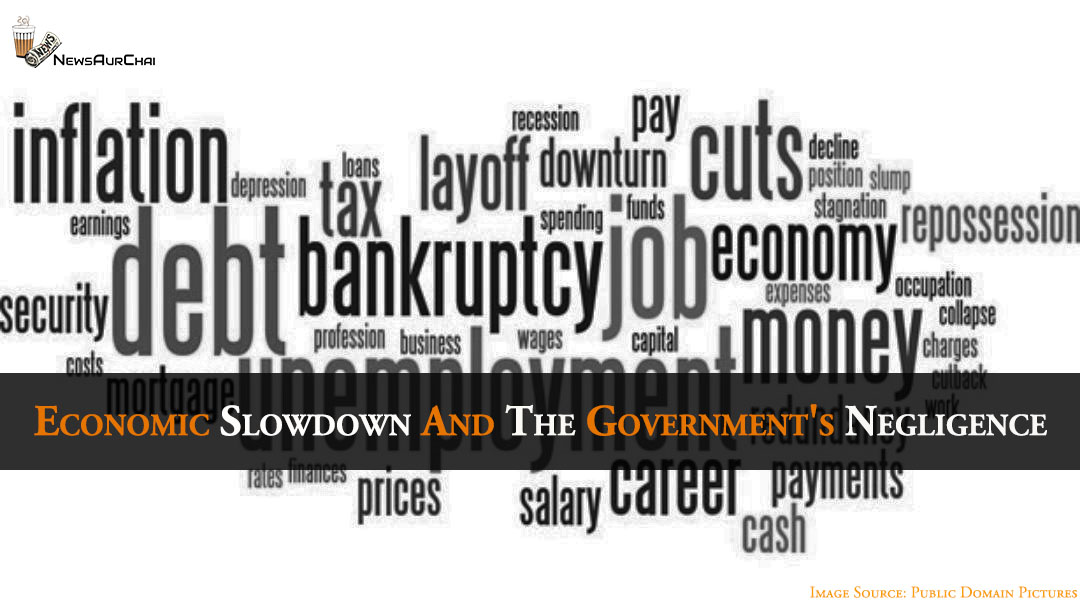
Recently the government released a datasheet which stated that the Gross Domestic Product (GDP) growth of the second quarter of the year 2019-20 as 4.5%, which is at a six-year low mark. The growth in the second quarter during the last year stood at 7.1 per cent, and its downward spiral continued for the seventh consecutive quarter.
All about Gross Domestic Product
Following are the primary indicators of a slowdown in Indian Economy:
- A significant sign is of low GDP rate, which is the lowest rate since 2013.
- Remarking crisis in the automobile sector. Around 30% drop in production by the top five firms in India have been seen.
- Goods and Service Tax (GST) collection has also dropped by 6,227 crores and a steep decline in saving and investment rate has also been noticed.
- Rupee costs are depreciated to cross ₹72 marks, the worst monthly loss in the last six years.
- Gross Fixed Capital Formation (GFCF) (as a percentage of GDP) has declined from 56% in FY15 to 36% in FY19
Reasons for slow growth or economic slowdown:
- The foremost reason is the Automobile sector crisis, as the demand for passenger vehicles dropped down, it results in higher fuel prices, higher interest rate and credit unavailability.
- High unemployment rate makes people exist without income. Demonetization has impacted the cash-based rural economy and erode the people white money instead of eroding black money.
- Structural reforms, like the introduction of GST, has caused a fall in revenue collection and also affected small businesses.
- NBFC crumbling after IL&FS collapse added to the liquidity crisis and made another investment in slowing down of the economy.
Steps taken by the government to revive the economy:
- Corporate Tax rate cut from 30% to 22% without surcharges and cess has also cut down from 35% to 25% including surcharges.
- Recapitalization of banks has also done by infusing Rs. 70,000 crores to raise liquidity. RBI reduced the repo rate by 135 basis points within nine months.
- Government has provided a special window initiative for the real estate sector so that it will trigger construction activities and help in maintaining economic growth.
- To boost demand, the government is planning to cut the individual income tax rate as well.
Further ways to look into:
- Main drivers of the economy are government expenditure, private consumption; investors have to work harder to revive the demand and loss as well.
- Credit flow to industries: Even after efforts by RBI to cut interest rates, banks have not transferred them to customers which is the loophole of policies.
- The revival of the rural economy: Government should work on schemes like MGNREGA. Alleviating buying capacity of the rural population is the call of the hour.
- FDI, labour reforms, improving ease of doing business like temptations and rationalising GST structure, simplification of online filing of returns, and educating people who belong to small business to help them out.
- Fast-tracking the process of NPA resolution via using tactics like insolvency and bankruptcy code.
The ways to hit the Bullseye of the aim of $5 trillion economy by 2025:
- GDP needs to grow faster than the average of 7.5 per cent in the next five years, and this should be the prime aim of the government.
- To ensure a rise in purchasing power and for that, the inflation needs to be contained at 4 per cent.
- The fixed investment rate needs to increase from 29 per cent to 36 per cent in the coming period of 5 years.
India should apply a multi-pronged approach to revive economic growth and measures should be taken by the government for capital buffers and stabilizing the effect of NPA to bring confidence among investors. Now we have to look at what and how will the government tackle this economic slowdown.





